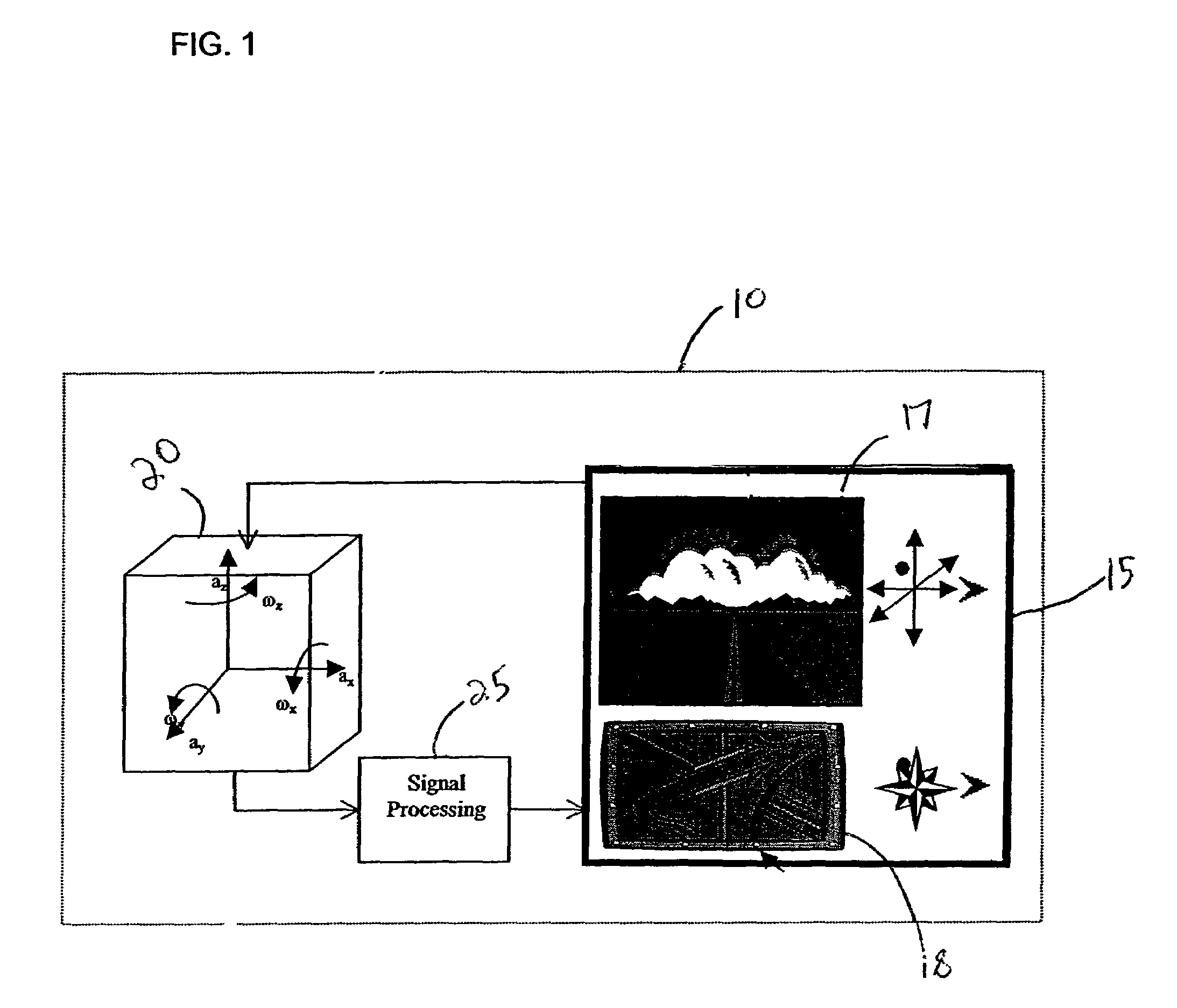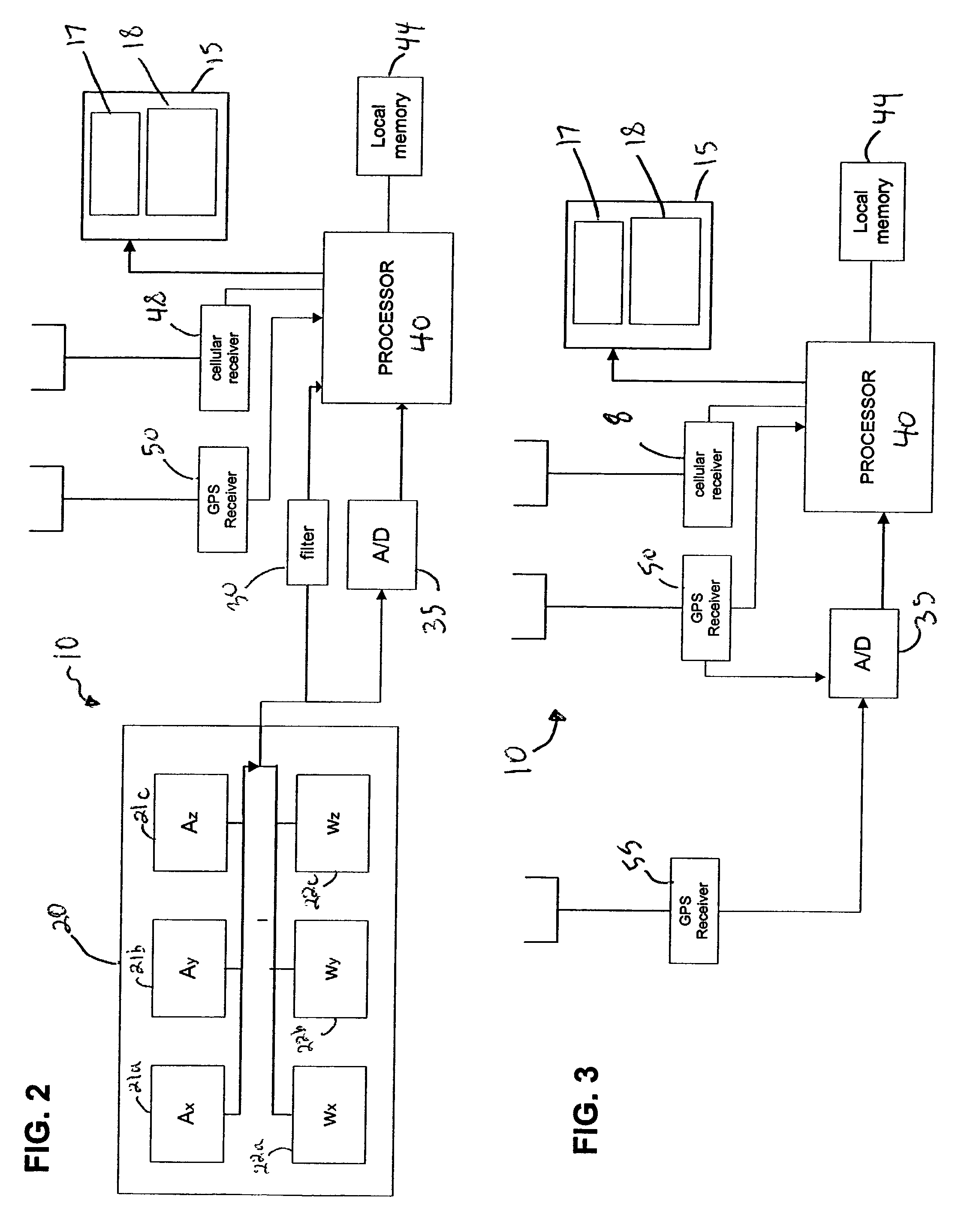Orientation and navigation for a mobile device using inertial sensors
a mobile device and inertial sensor technology, applied in the field of visual navigation systems, can solve the problems of limited ability to modify the orientation of the map, limited capability of three-dimensional simulation, and disadvantages of current gps-based visualization interfaces, and achieve the effect of improving navigation and orientation
- Summary
- Abstract
- Description
- Claims
- Application Information
AI Technical Summary
Benefits of technology
Problems solved by technology
Method used
Image
Examples
first embodiment
[0035]Such navigation is accomplished using sensors, depicted in block 20, which provide signals for estimation of the movement of the mobile device. As described below, the sensors include inertial acceleration and rotational velocity sensors that provide for estimation of both the relative translation and the rotation of the mobile device (with respect to a reference frame) in addition to one or more GPS receivers for estimating either absolute position alone (using one GPS receiver) or both absolute position and orientation (using two or more GPS receivers). According to another embodiment, the sensors include multiple GPS receivers for estimating absolute position and orientation in three dimensions without use of inertial sensors. The inertial sensors provide direct signals that may be used for certain types of user interaction such as for changing the state of a graphical user interface control. Thus, if the user abruptly moves or twists the mobile device, causing a sudden in...
second embodiment
[0043]FIG. 3 depicts a schematic view of the mobile device according to the present invention including multiple GPS receivers. As shown in FIG. 3, mobile device 10 includes a first GPS receiver 50 and a second GPS receiver 55. The processor 40 uses the input from the first GPS receiver 50 to calculate a coordinate position in terms of latitude, longitude, and altitude estimated by triangulation using differential times of receipt of GPS signals transmitted from a plurality of GPS satellites. Using the input from the second GPS receiver 55, located some distance from the first GPS receiver 50 on the mobile device 10, the processor can estimate the attitude of the mobile device by comparing the relative differences between the timing of GPS signals received by the respective GPS receivers 50, 55. Thus, according to this embodiment, location and attitude are estimated using the GPS system without reliance on inertial sensors.
[0044]FIG. 4 depicts a software model of the mobile device 1...
PUM
 Login to View More
Login to View More Abstract
Description
Claims
Application Information
 Login to View More
Login to View More - R&D
- Intellectual Property
- Life Sciences
- Materials
- Tech Scout
- Unparalleled Data Quality
- Higher Quality Content
- 60% Fewer Hallucinations
Browse by: Latest US Patents, China's latest patents, Technical Efficacy Thesaurus, Application Domain, Technology Topic, Popular Technical Reports.
© 2025 PatSnap. All rights reserved.Legal|Privacy policy|Modern Slavery Act Transparency Statement|Sitemap|About US| Contact US: help@patsnap.com



